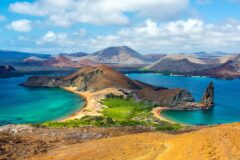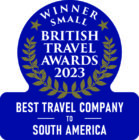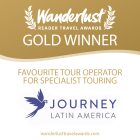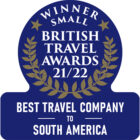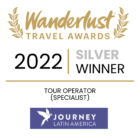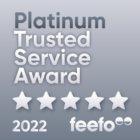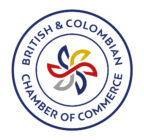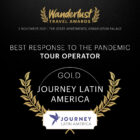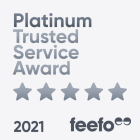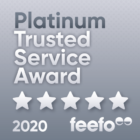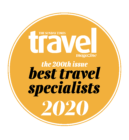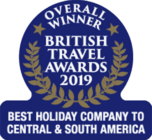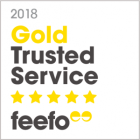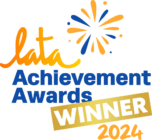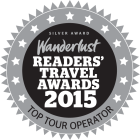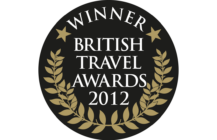
Overview & Highlights
Nicaragua and El Salvador are off the beaten track, with fairly rudimentary infrastructure but as such they offer a rewarding experience akin to what travellers enjoyed in other parts of the continent decades ago.
- Granada: Guided city tour and Masaya volcano
- El Castillo: Caiman-spotting by night
- El Castillo: Hike in Indo Maíz Biosphere Reserve
- El Castillo: Kayaking on Rio San Juan
- El Castillo: Guided tour of the fortress
- Perquín: El Mazote and Museo de la Revolución
- Suchitito: Walking tour
- EL Imposible National park: hiking
Nicaragua has been developing a discreet, eco-friendly approach to tourism for some years while El Salvador now presents its Mayan sites, colonial cities, delightful rural drives and the El Imposible National Park. On this holiday you’ll be among the first to discover their natural beauty and unpretentious charm. The people of both countries are among the most hospitable in Latin America.
The two newcomers on the radar of adventurous travellers, Nicaragua and El Salvador, share gorgeous landscapes of volcanoes, lakes, palm-fringed beaches, fertile slopes smothered in coffee bushes, and a diversity of flora and fauna. Both have only relatively recently emerged from a period of political turbulence: the impressive level of reconciliation between formerly warring factions has resulted in the creation of two of perhaps the most appealing and friendly countries on the continent. They cannot be compared with the big hitters of Mexico, Peru and Brazil in terms of mind-boggling attractions but their scantily populated rural landscapers of chains of volcanoes, coffee plantations, lakes and remote rivers combine to create a captivating destination.
Outline itinerary
Day 1
Arrive in the colonial city of Granada and transfer to your hotel.
Day 2
Guided city tour and visit to Masaya volcano.
Day 3
By road to San Carlos; travel by boat along Rio San Juan to El Castillo.
Day 4
Hike in Indo Maíz Biosphere Reserve; river kayaking; guided fortress tour.
Day 5
Return by boat to San Carlos, continue to Ometepe Island.
Days 6-7
At leisure to cycle, hike, ride a horse or sit on the beach.
Day 8
By ferry to the mainland, drive to León.
Day 9
At leisure in this University city.
Day 10
Return to Managua, Fly to San Salvador and continue to Perquin
Day 11
Visit el Mazote and Museo de la Revolución.
Day 12
By road to Suchitoto.
Day 13
Walking tour of Suchitoto.
Day 14
Drive along Ruta de las Flores to Ataco.
Day 15
Trekking in El Imposible National Park.
Day 16
By road to Costa del Sol on the coast.
Day 17-18
At leisure on the coast.
Day 19
Transfer to San Salvador airport for international flight home.
Itinerary
Day 1
Arrive in the colonial city of Granada and transfer to your hotel.
You will be met at the airport by our local representative who will accompany you on the one hour drive to Granada.Founded in 1524, Granada lies at the foot of Mombacho volcano and is the oldest city in the New World.
At its height, it became very rich on the back of the gold trade. The city was regularly plundered by pirates and completely razed by American mercenary William Walker at the beginning of the 19th century. However, Granada has since been wonderfully restored and its colourful colonial houses and cobbled streets that run down to the shores of Lake Nicaragua are a delight.

Day 2
Guided city tour and visit to Masaya volcano.
Take a private guided city tour of Granada, visiting its colonial churches, strolling down the narrow streets and passing graceful colonial houses. Many of the places of interest are within the vicinity of the main square. These include the beautiful, baroque La Merced church, the Casa de Los Tres Mundos – now a cultural centre for local musicians and dancers; and the 16th-century San Francisco convent.
Granada is on the shores of Lake Nicaragua, the second largest body of freshwater in the Americas. It appears to the observer as an inland sea, with silky silver waves tipped by white horses when the wind blows. Embark on a small launch for a relaxing boat ride in the sheltered waters around the peaceful Isletas, hundreds of tiny, bright green and thickly forested islands created by eruptions from the bulky Mombacho volcano which looms over the region. Depending on the weather and time of day, you may observe prolific bird life. Small fishing communities live here and some islands host impressive weekend retreats owned by wealthy Nicaraguans.
Continuing by road to the summit of the smoking cone of the Masaya volcano. Climb a clear path to the Santiago crater, active since 1946. You can look down into the crater, where swirling sulphurous vapour conceals any fiery embers. There are wide-ranging views over the countryside and the lakes. On the way back to Granada, stop off at the Masaya arts and crafts market specialising in traditional ceramics and hammocks.

Day 3
By road to San Carlos; travel by boat along Rio San Juan to El Castillo.
Travel by road to San Carlos on the south-eastern shores of Lake Nicaragua. The liveliest part of this quiet and somewhat ramshackle town is down by the pier: ferries and private launches jostle for space with fishing boats. The roads from the north end here: to travel east to the settlements along Rio San Juan you have to take a boat. (New roads are opening all the time including one to Costa Rica which will cross the river close to El Castillo).
From San Carlos, you’ll embark on a 90min river journey by river. The banks are initially farmed, with fields of maize and grazing cattle punctuated by small jetties and rural homes. However, as you travel downstream, the vegetation gradually becomes dominated by natural tropical forest. There’s plenty of wildlife to be seen: scores of snowy ibis alight upon the branches overhanging the water and you may spot monkeys swinging through the taller trees or a caiman lazing on naked logs.
You turn a bend in the river to be greeted by a spectacular and unexpected sight: on a rare hilltop a vast, stone-built Spanish fortress glowering over a series of white-water rapids and the squat, wooden stilted houses of the quirky little port El Castillo.
In the evening, go searching for caimans by boat under the moonlight, accompanied only by a specialist guide. As you glide for 90mins through the darkness, a journey orchestrated by the nocturnal sounds of the rainforest, the guide will be using a spotlight to reflect the beady red eye of caimans (alligators) at repose in the tropical vegetation along the water’s edge.
Day 4
Hike in Indo Maíz Biosphere Reserve; river kayaking; guided fortress tour.
Just 3km downstream from El Castillo you reach the Indio – Maíz Biosphere Reserve, dedicated to the preservation and research of its biological diversity. Set off with your guide on the 2km Bartola Trail, a clear path which winds its way through the forest, which is replete with tall, thick-waisted trees overhanging, outsized tropical plants with huge waxy leaves, and ferns sheltering poison-dart frogs not much larger than a fingernail.
You may be lucky and spot a family of monkeys watching you from the safety of a branch; or a battalion of leaf-cutter ants may cross your path. If the weather and river levels allow you can kayak along the San Juan or Bartola river spotting sunbathing turtles and caimans.
El Castillo fortress, the oldest building in Nicaragua, dating back to 1673, was founded by the Spanish to protect the affluent trading city of Granada from what they considered to be European pirates. This location was chosen because the fort could be constructed on the top of a relatively high hill, from which the soldiers could have a 360 degree view of the jungle around and the river approaches: the fort was also protected by the presence of the rapids below. You will be escorted on a tour of the fort, with its silent cannons; you can enjoy the expansive views with a more pacific intent. Illustrated boards relate the story, including the capture and brief tenure of the fort by the British Navy led by Horatio Nelson (aged 22).

Day 5
Return by boat to San Carlos, continue to Ometepe Island.
Return by boat to San Carlos, travel by road to Rivas, travelling on a new but still little-used road passing through rolling cattle country and small cowboy towns (5hrs) Embark a ferry to take you across the lake to Ometepe Island (1hr).The relaxed, tranquil island rises majestically from Lake Nicaragua. It is dominated by twin conical volcanoes, Concepción and Maderas. The island is partially blanketed with lush jungle vegetation populated by monkeys and a plethora of bird species.
The island is also peppered with citrus, banana, watermelon, avocado and cacao plantations – thanks to the island’s fertile volcanic soil. Life here has been unchanging for decades if not centuries, in spite of the upheavals caused by revolution and civil war elsewhere. Only one road has been fully paved, and this, along with the fact that it is only reached by boat, has ensured the enduring feeling of remoteness. Your hotel overlooks the loveliest beach on the islands, fringed by waving palms.

Days 6-7
At leisure to cycle, hike, ride a horse or sit on the beach.
At leisure on Ometepe. You can go riding, cycling, or climb a volcano; visit the little El Ceibo museum of pre-Columbian art and petroglyphs scattered around the island. There’s an attractive nature reserve, Charco Verde, where palm trees and densely-packed, fruit-bearing tropical vegetation define the lake shore, which is indented with small volcanic beaches. The reserve is enlivened by the presence of over 200 howler monkeys, and by the calls of migratory and indigenous birds.
Monkeys abound all over the place: white-faced capuchin and howler monkeys are common, spider monkeys may also be spotted.

Day 8
By ferry to the mainland, drive to León.
Take the ferry back to San Jorge and proceed to the city León. León was founded in 1524 and moved to its present site after being devastated by an earthquake in 1610. Formerly Nicaragua’s capital, it has retained much of its ecclesiastical and intellectual heritage. Many of the building walls are daubed with colourful Sandinista and anti-American murals and riddled with bullet holes – a poignant symbol of Nicaragua’s turbulent past.

Day 9
At leisure in this University city.
Explore the city during your day at leisure.

Day 10
Return to Managua, Fly to San Salvador and continue to Perquin
Transfer to Managua airport and fly to San Salvador, El Salvador’s capital. Continue by private transfer through the Ruta de la Paz (The Peace Route). Along the way you will visit some sites of the country’s recent historical events, scenes of heavy fighting during the civil war which ended in 1992. A guide will narrate the unfolding of events in this region and tell you about its people and culture. The route passes through fertile scenery including the coffee-growing zone with its vistas across mountain valleys. In the afternoon you will arrive in the historic town of Perquín, only 3km from the border with Honduras.
Day 11
Visit el Mazote and Museo de la Revolución.
The area around Perquín was a rebel stronghold for much of the country’s civil war. El Mazote was the scene of heavy fighting between government and guerrilla forces. A guide will explain the history of the village and the effects the war had on the country as a whole. You will then head to Rio Sapo, a protected natural area where you can enjoy a short hike and a dip in the river before returning to Perquín. Lastly you will visit the Museo de la Revolución (Revolution Museum) where your guide will show you the moving displays relating to the war and this region in particular.
Day 12
By road to Suchitoto.
Drive (4 hrs)to Suchitoto. This charming town is composed of lovely colonial buildings and cobbled streets. It is popular with artists and musicians with regular exhibitions and performances. An annual international arts festival is held in February.

Day 13
Walking tour of Suchitoto.
Suchitoto is renowned for its strong sense of identity and even has its own anthem, flag and coat of arms. During the brutal civil war it was badly hit, but fortunately, since the peace accord, many reconstruction works have been carried out. In the native Natuatl tongue, Suchitoto means ‘place of birds and flowers’ which will become clear on arrival.
On your leisurely 2-3hr guided walking tour you visiting the principal attractions such as Santa Lucía Church, the Arte Para la Paz (Art for Peace) Museum and Las Ruinas Theatre, which are all set amid the white cobblestone roads, quaint balconies and adobe houses.

Day 14
Drive along Ruta de las Flores to Ataco.
Set off by road on the 36km-long winding mountain route which links Sonsonate to Ahuachapán, known as the Ruta de las Flores (Route of the Flowers). Although it reaches 2,365m high, it is easily navigable and the roads are in good condition. As the name suggests, you’ll pass fields of tropical flowers and nurseries which thrive in the cool, pleasant climate. Dotted among the flowers are small towns. You’ll travel through verdant foliage as you head through the heart of El Salvador’s coffee growing region. The highlights include stops in villages and market towns and ends in Ataco.

Day 15
Trekking in El Imposible National Park.
Visit El Imposible National Park in the Apaneca-Ilamatepec mountain range. The tropical forest is home to wide array of flora and fauna, and navigated via a network of jungle trails. The length of your trek depends on the time of year: during the wet season (May- Nov) it takes about 2hrs while for the rest of the year, expect to hike for roughly 5hrs. The walk reaches a lookout over the exuberant valley below and you should see lots of butterflies (Jan-Mar is best for them).
Day 16
By road to Costa del Sol on the coast.
By road to Costa del Sol via San Salvador. El Salvador’s Pacific coastline is dotted with small fishing communities and although tourism is in its infancy, there is a good range of accommodation. Rugged bays with big breaks are a haven for surfing enthusiasts and many international competitions have been held here.
For nature enthusiasts there are 4 species of turtle which frequent the Pacific coast, in addition to an abundance of wading birds. That said, the majority of people who visit the coast want to take it easy and enjoy juicy sea food washed down with a cold beer.
Your hotel sits on one of El Salvador’s most attractive beaches. There is no village close by, it’s a self contained property where you can relax and enjoy the natural environment.

Day 17-18
At leisure on the coast.
At leisure on the beach. Behind Costa del Sol there are some mangroves, Esteros de Jatepeque, where it is possible to take boat rides, go kayaking, bird watching or fishing.

Day 19
Transfer to San Salvador airport for international flight home.
Essentials
Tour info
Transport
8 road journeys; 5 river and lake boat journeys; 1 flight (Managua – San Salvador)
Accommodation
In general you will be staying in small, mid-range hotels with reasonable facilities. Some are family run and offer a friendly and homely welcome. The range of properties is such however that you stay in all of a restored convent, colonial house, a coffee estate and beachside cabins.
Meals
Breakfast daily, lunch days 2, 15; full board days 3,4.
Guides
We carefully select our local partners, some of whom we have worked with for over 25 years. Their English-speaking guides understand the expectations of our clients very well, and are consistently singled out for praise by the latter on their return.
Summary Of Nights
19 days, 18 nights: Granada 2; El Castillo 2; Ometepe 3; León 2; Perquín 2; Suchitoto 2; Ataco 2; Costa del Sol 3.
Currency
The unit of currency in Nicaragua is the córdoba, in El Salvador the US dollar.
How To Take It
Cash machines are available in Managua airport, and in Granada and León: taking a debit or credit card with a PIN number is the most convenient way of withdrawing money while on your trip and in the more upmarket shops and restaurants you can also pay by card. However, since cards can get lost, damaged, withheld or blocked, or the phone line to the bank may be down, you should not rely exclusively on a card to access funds. You should authorise your bank first, and withdrawals may be limited.
In el Salvador you can obtain US dollar cash with a card in banks and may be able to obtain cash advances via the few ATMs in larger towns. Tourist-focused services in Nicaragua also accept US dollars cash while small outlets will charge in córdobas.
We recommend that you take a reasonable quantity of dollar notes (no more than is covered by your insurance). Dollar bills should be in good condition, soiled or torn bills may be refused.
Daily Spend
It is very difficult to give a guideline for essential expenses but a budget of around US$35 per day should cover the cost of meals not included in the holiday price, drinks and the odd souvenir. Eat at the best restaurants and you will pay considerably more.
Tipping
Tips are welcomed and local guides often rely on their tip as a significant proportion of their income.
Most service industry workers will expect a tip of some kind and so it is useful to have spare change for hotel porters, taxi drivers and the like. It is common to leave 10 – 12% in restaurants.
Tipping guidelines can be found in our Briefing Dossier.
Insurance
Travel insurance is essential. Details of our recommended policy can be found on our Travel Insurance page.
Airport Taxes
If you have purchased your flights through Journey Latin America, the international departure tax is usually included in the ticket.
Visas
From 15 August 2024, UK passport holders require a visa for Honduras, a country which is transited by road during this holiday. Full UK passport holders do not need a visa for the other countries visited on this holiday (see below if travelling via the USA). Anyone with a different nationality should enquire with us or check with the relevant consulate.
If flying to the US, or via the US you will need to fill in your online ESTA application.
Trip Suitability
Generally this holiday is suitable for all able, reasonably fit travellers who accept the sometimes uncertain and rudimentary nature of travel to remote places. There are a few days where you spend most of the time travelling.
If you have a disability which we should be aware of, please contact us.
Climate
This itinerary takes you to tropical climes where the sun is strong and temperatures high – often over 30°C. Those travelling between May and October should encounter higher temperatures (around 35°C) and high humidity. The ‘official’ rainy season is May to October.
Clothing And Special Equipment
Bring plenty of light cotton clothing and good, comfortable walking shoes. A waterproof jacket is also necessary. We suggest that you plan to ‘layer’ your clothing; it is easier and more efficient to put on a couple of light layers than one thick jumper, and sensible to have long sleeves for areas where mosquitos may be lurking. Sandals are a good informal option for evenings. Protection against the sun (sunblock, sun hat) and mosquito repellent are essential and you should bring swimwear. A daypack is useful for carrying sunblock, guidebook, water and any extra layers.
Please note Nicaragua prohibits certain items, including binoculars with night vision capability. Whilst it’s our understanding that you can bring a pair of normal binoculars into the country, some travellers have experienced delays upon entry whilst these are checked by customs.
Vaccinations
Preventative vaccinations are recommended against the following; typhoid; polio; tetanus; hepatitis A. For specific requirements you must consult your GP.
You can also find helpful information on the Masta Travel Health website.
What's included in the price
- Services of our team of experts in our London office
- Services of Journey Latin America local representatives and guides
- All land and air transport within Latin America
- Accommodation as specified
- Meals as specified
- Excursions as specified, including entrance fees
Included Excursions
- Granada: Guided city tour and Masaya volcano
- El Castillo: Caiman-spotting by night
- El Castillo: Hike in Indo Maíz Biosphere Reserve
- El Castillo: Kayaking on Rio San Juan
- El Castillo: Guided tour of the fortress
- Perquín: El Mazote and Museo de la Revolución
- Suchitito: Walking tour
- EL Imposible National park: hiking
What's not included in the price
- Tips and gratuities
- Meals other than specified
- International flights to Latin America
- Airport taxes, when not included in the ticket
- Optional excursions
